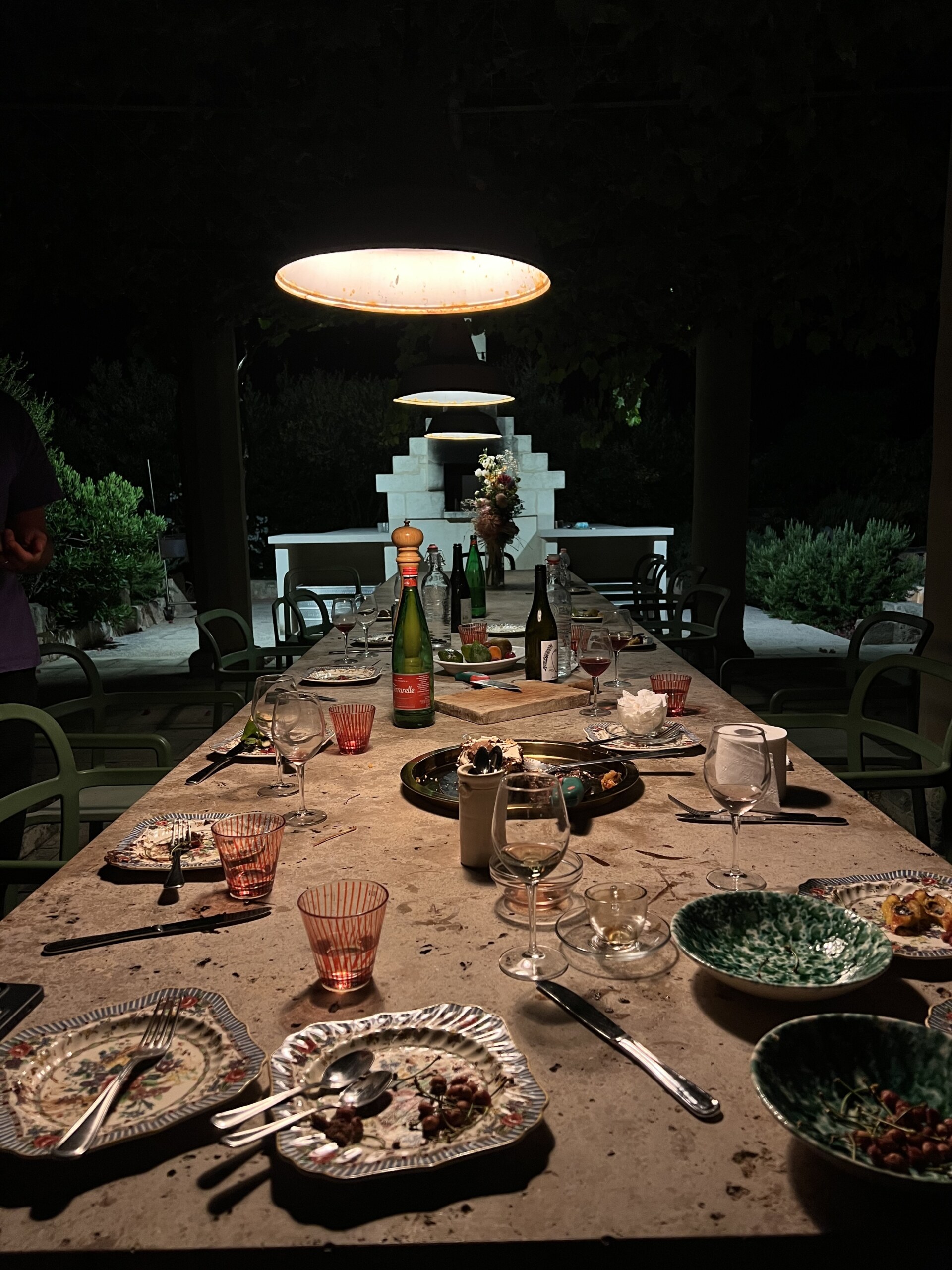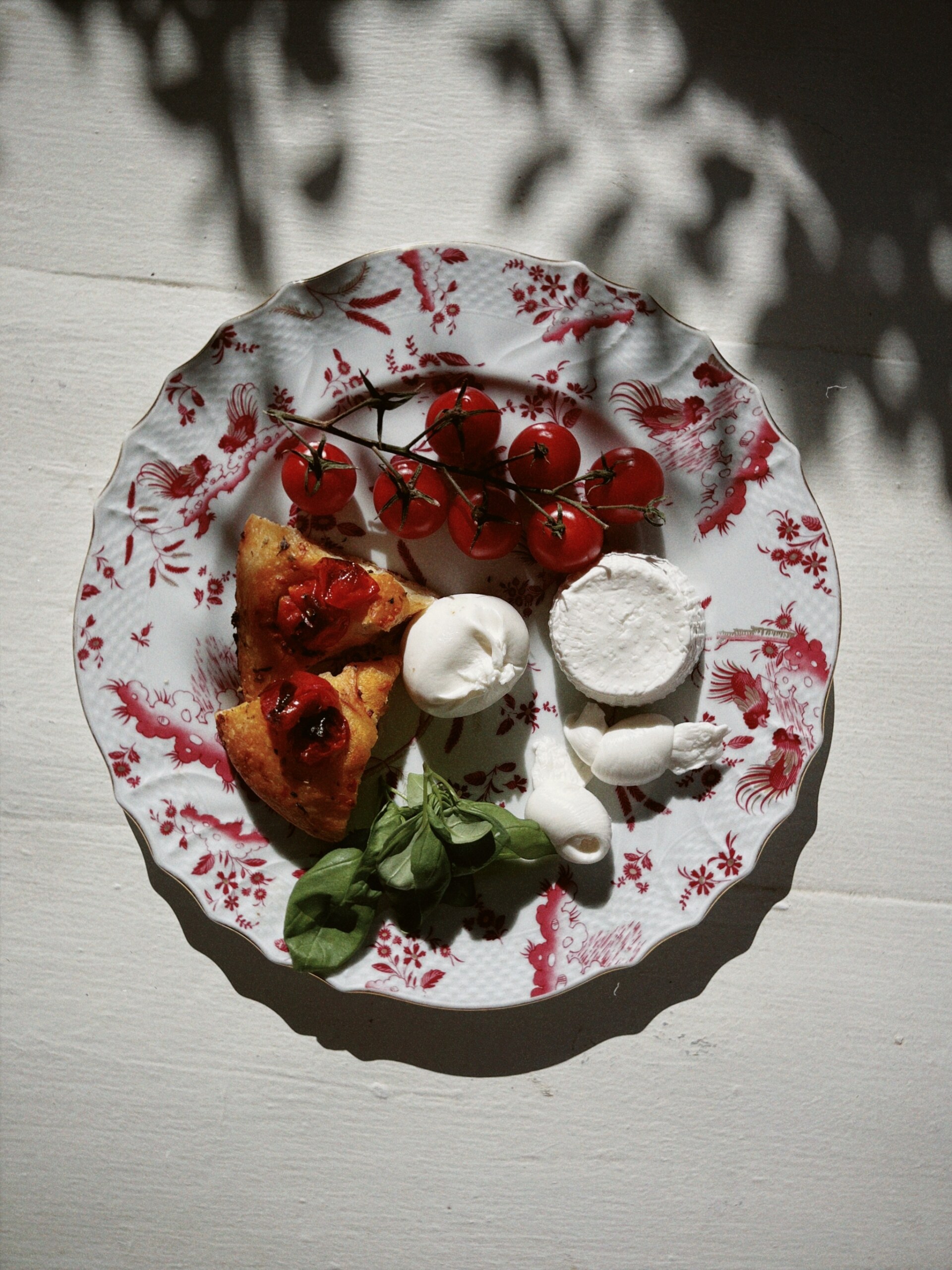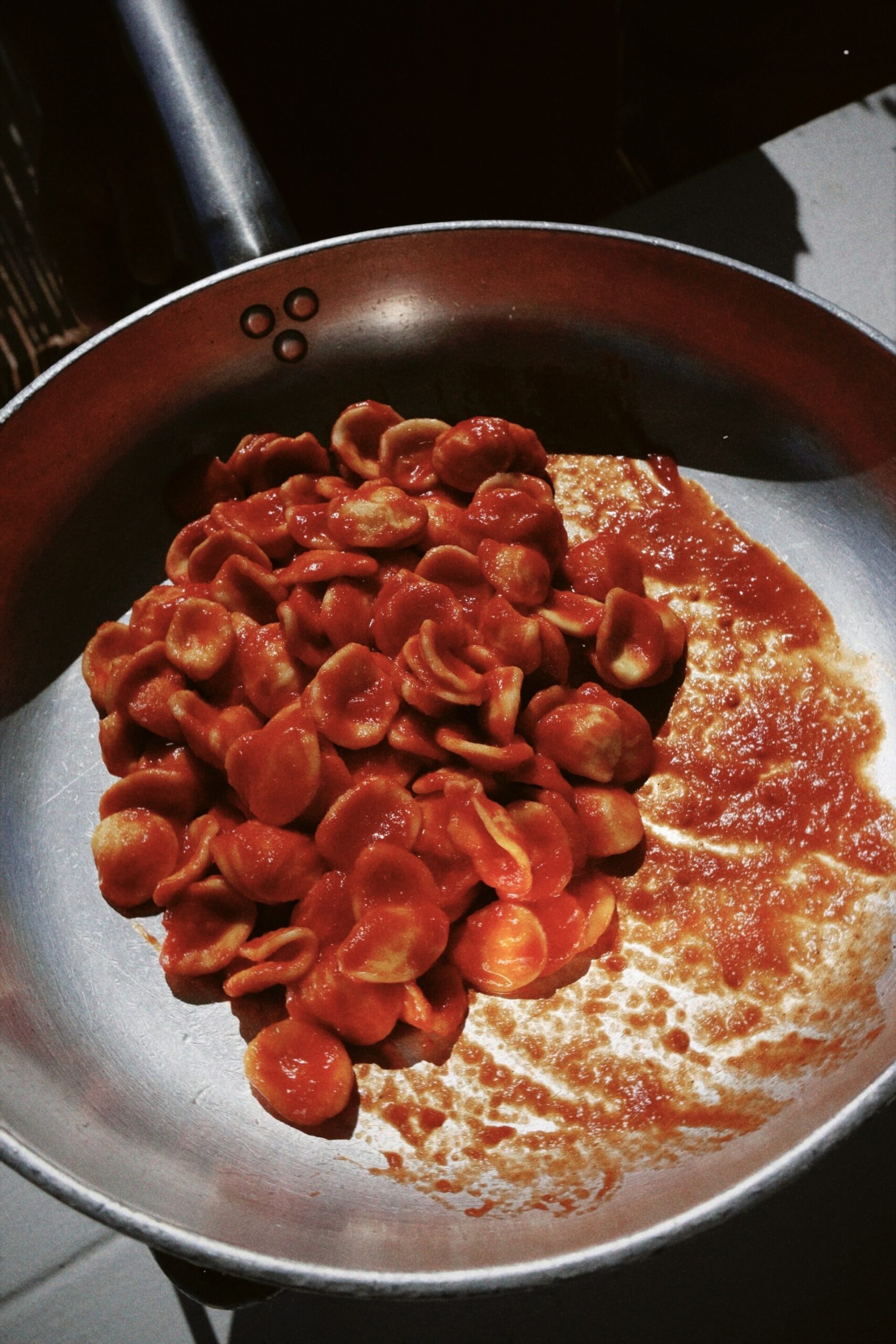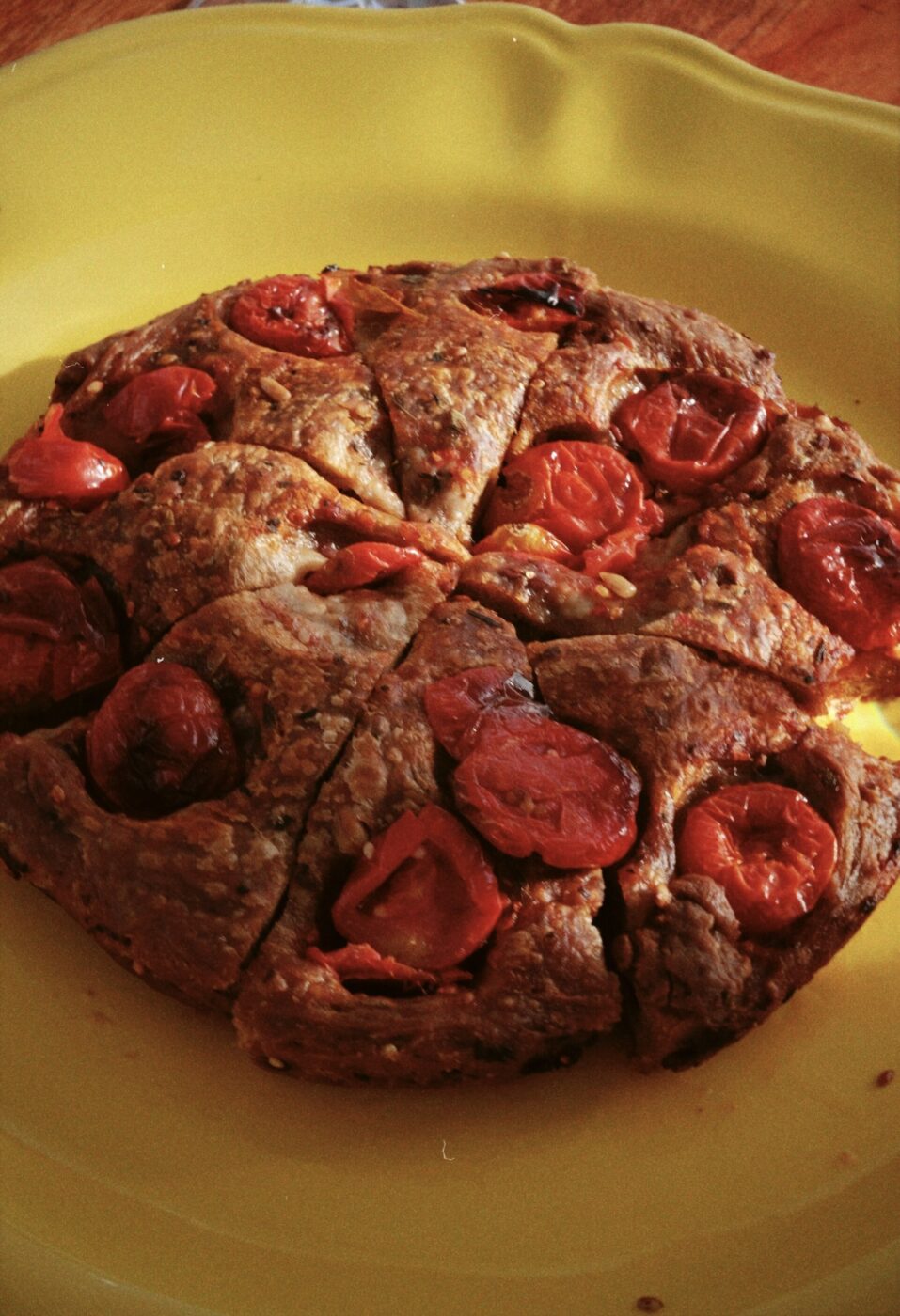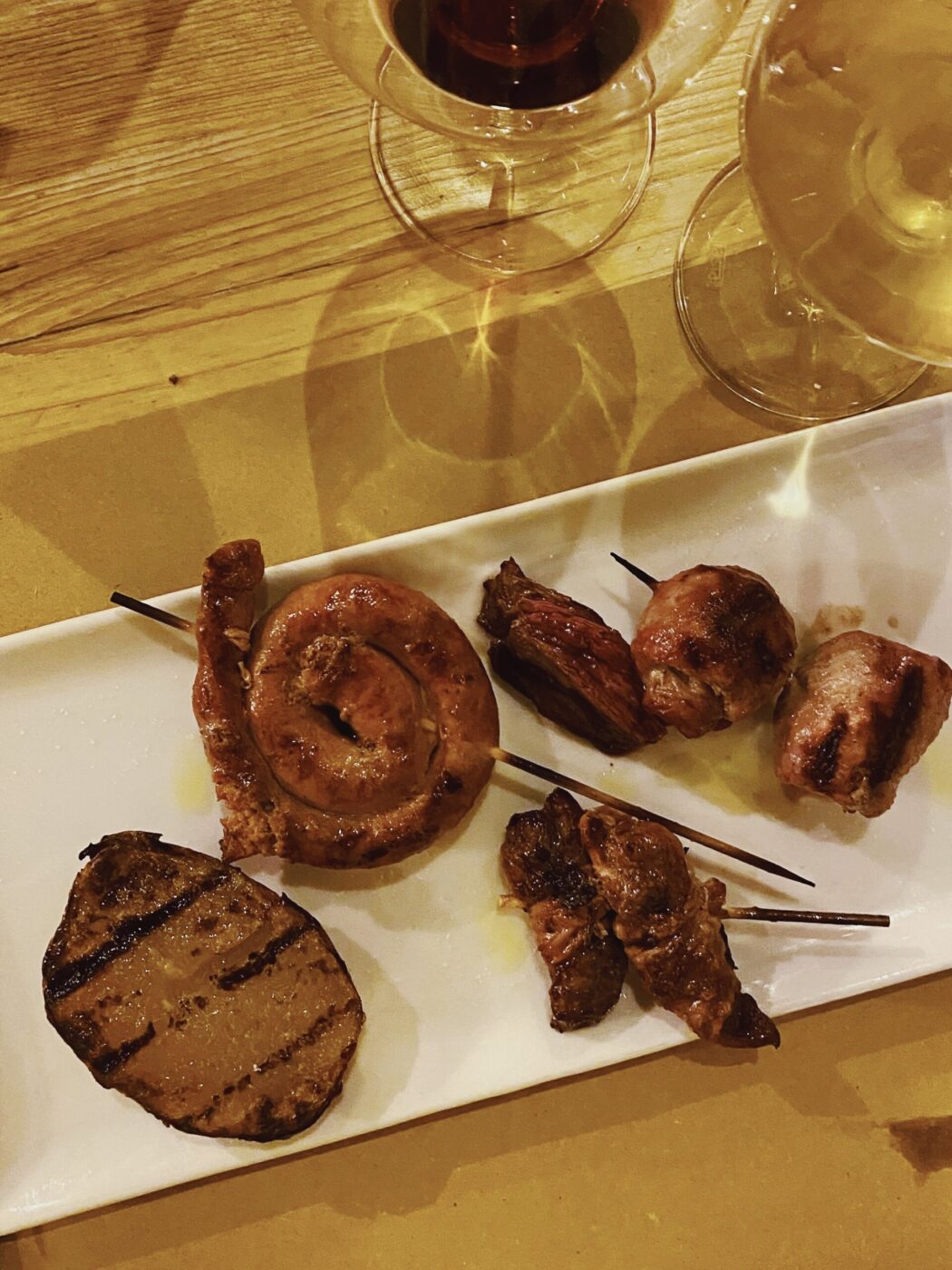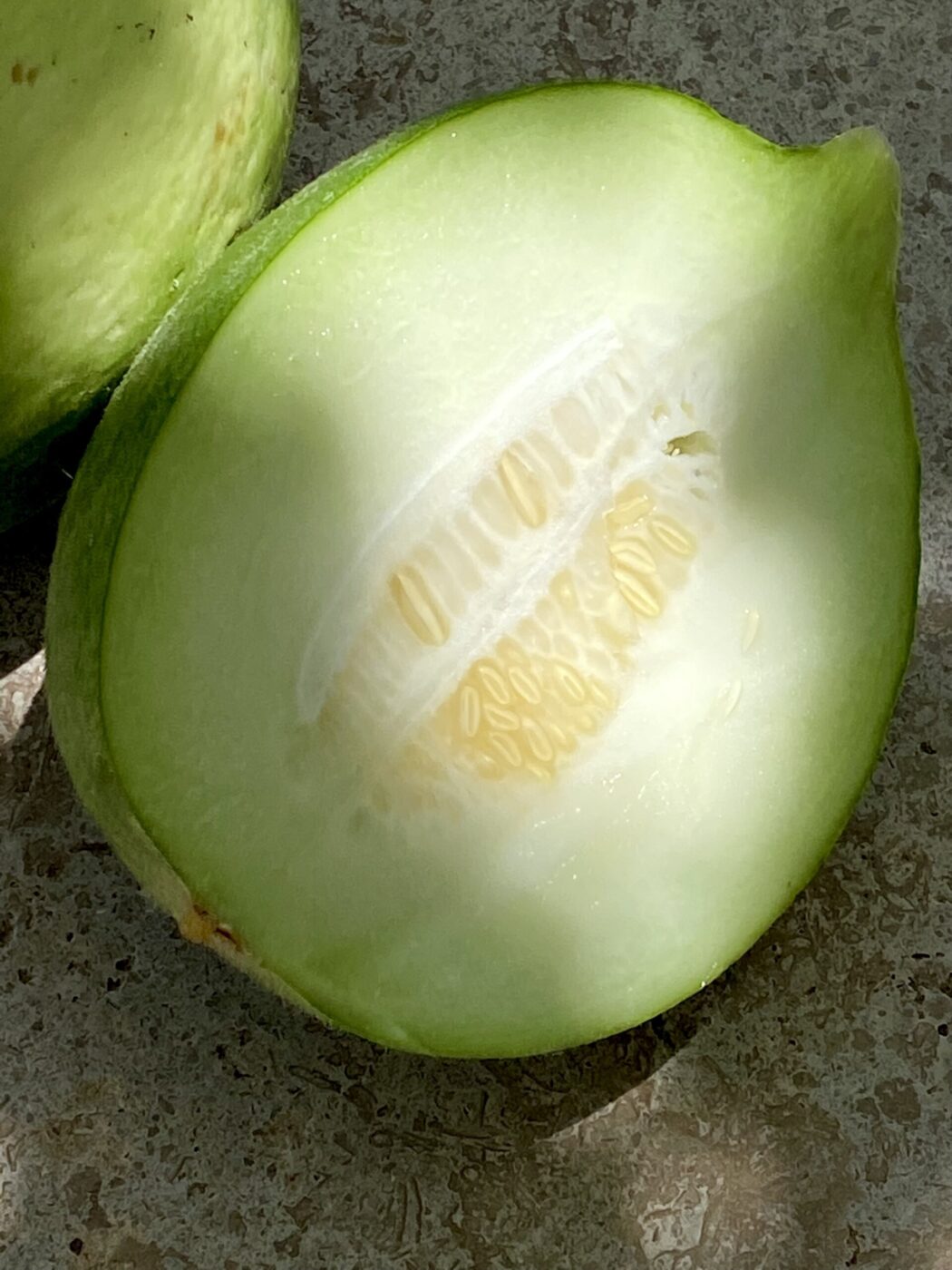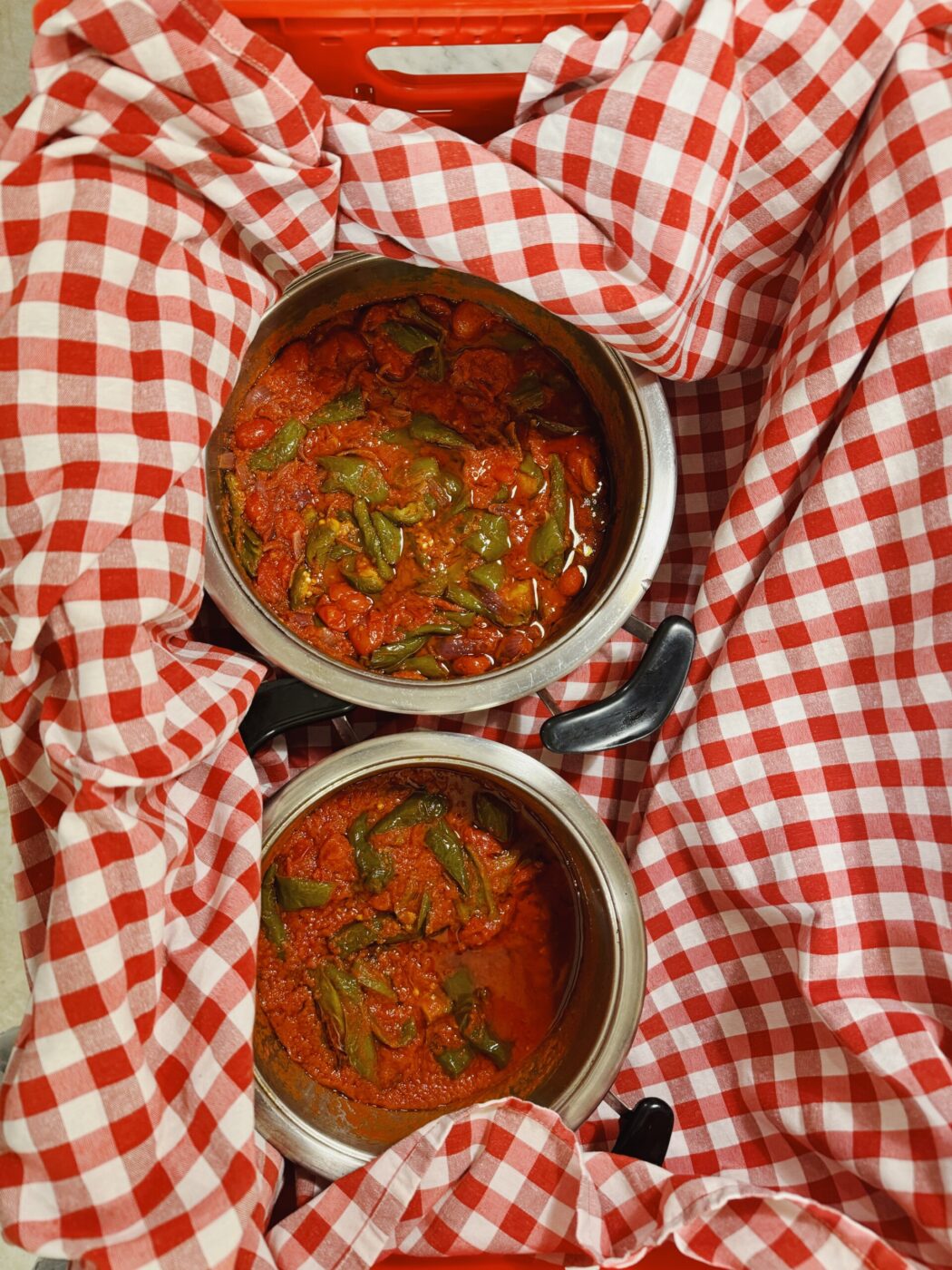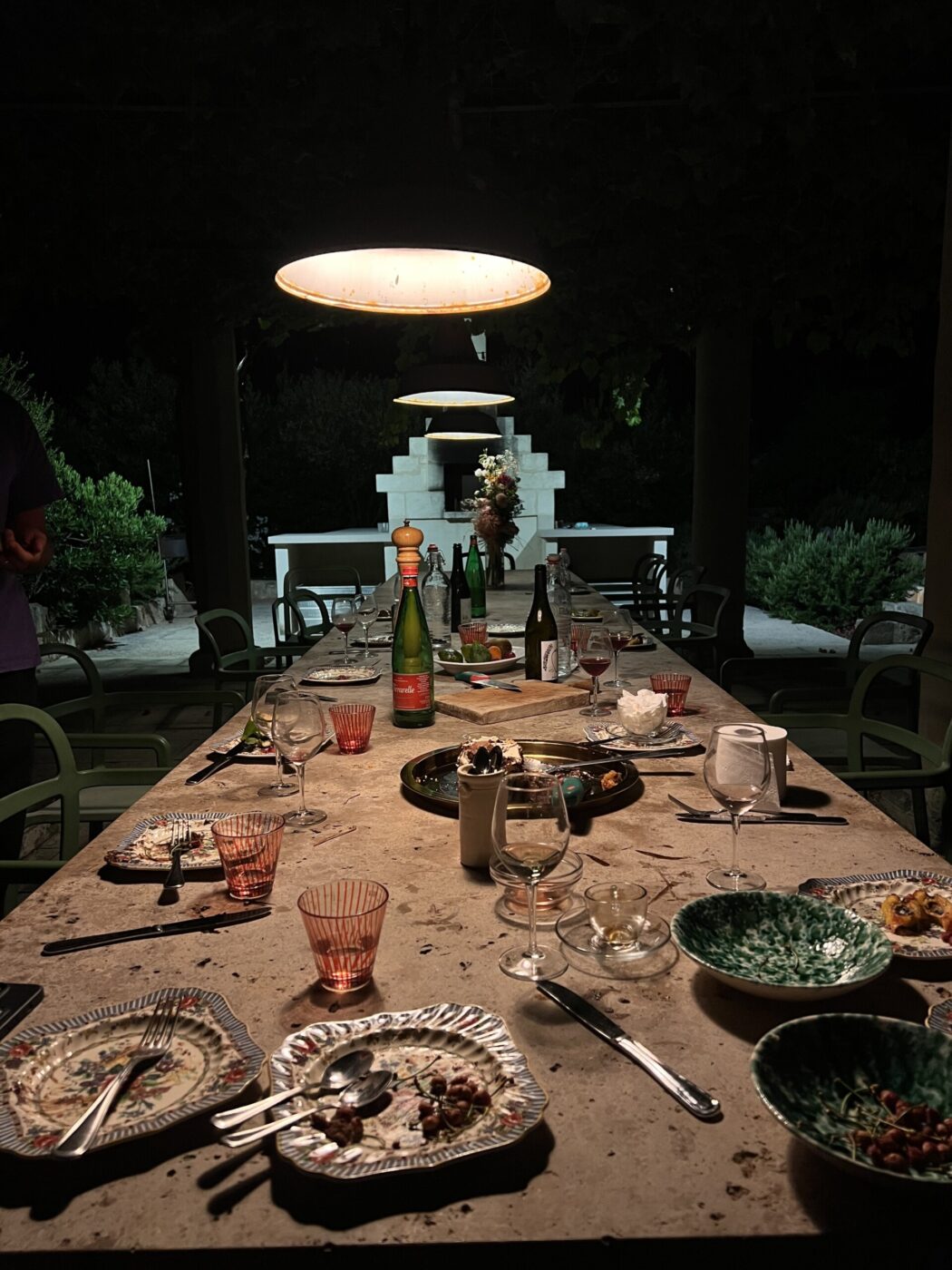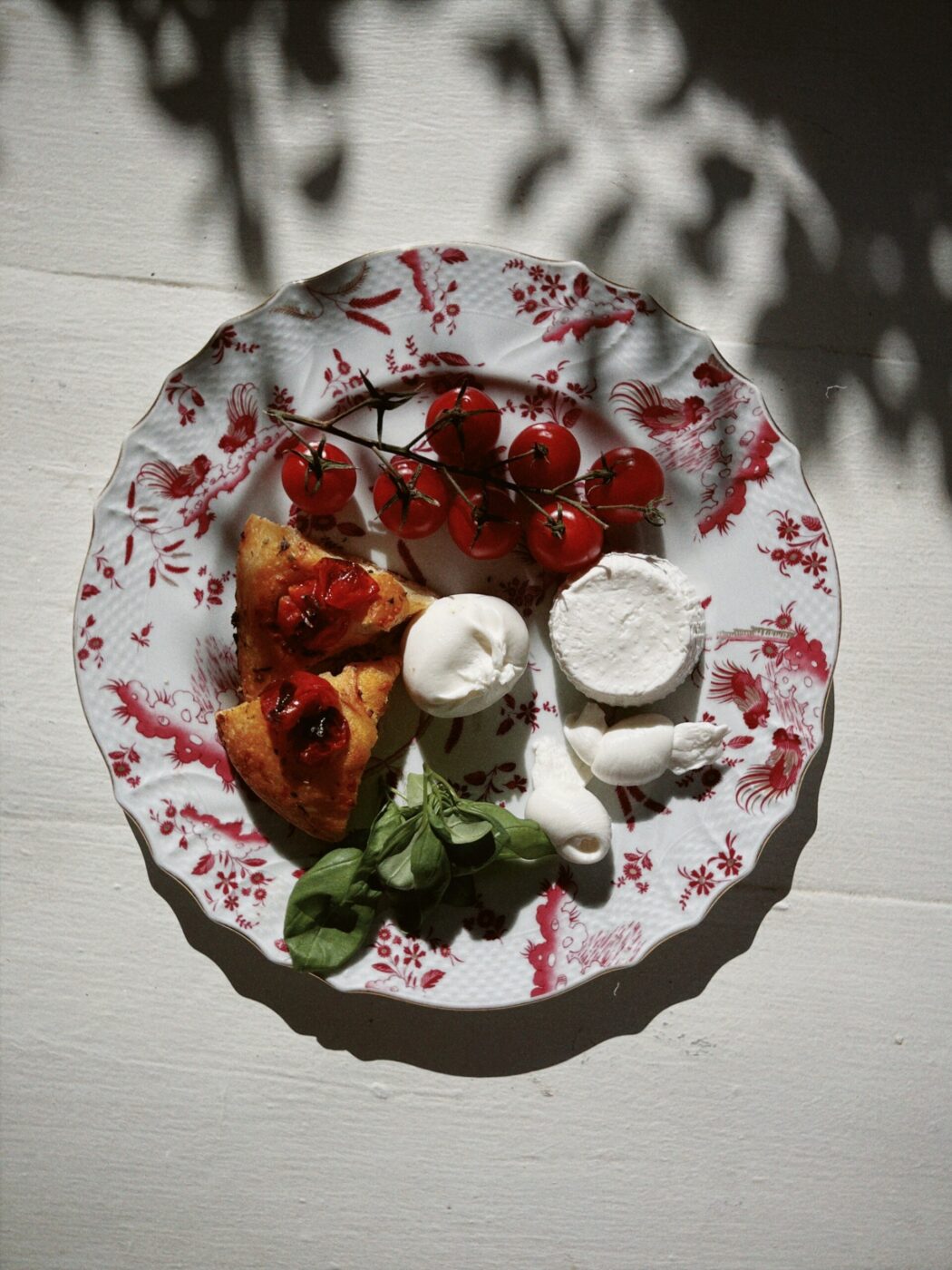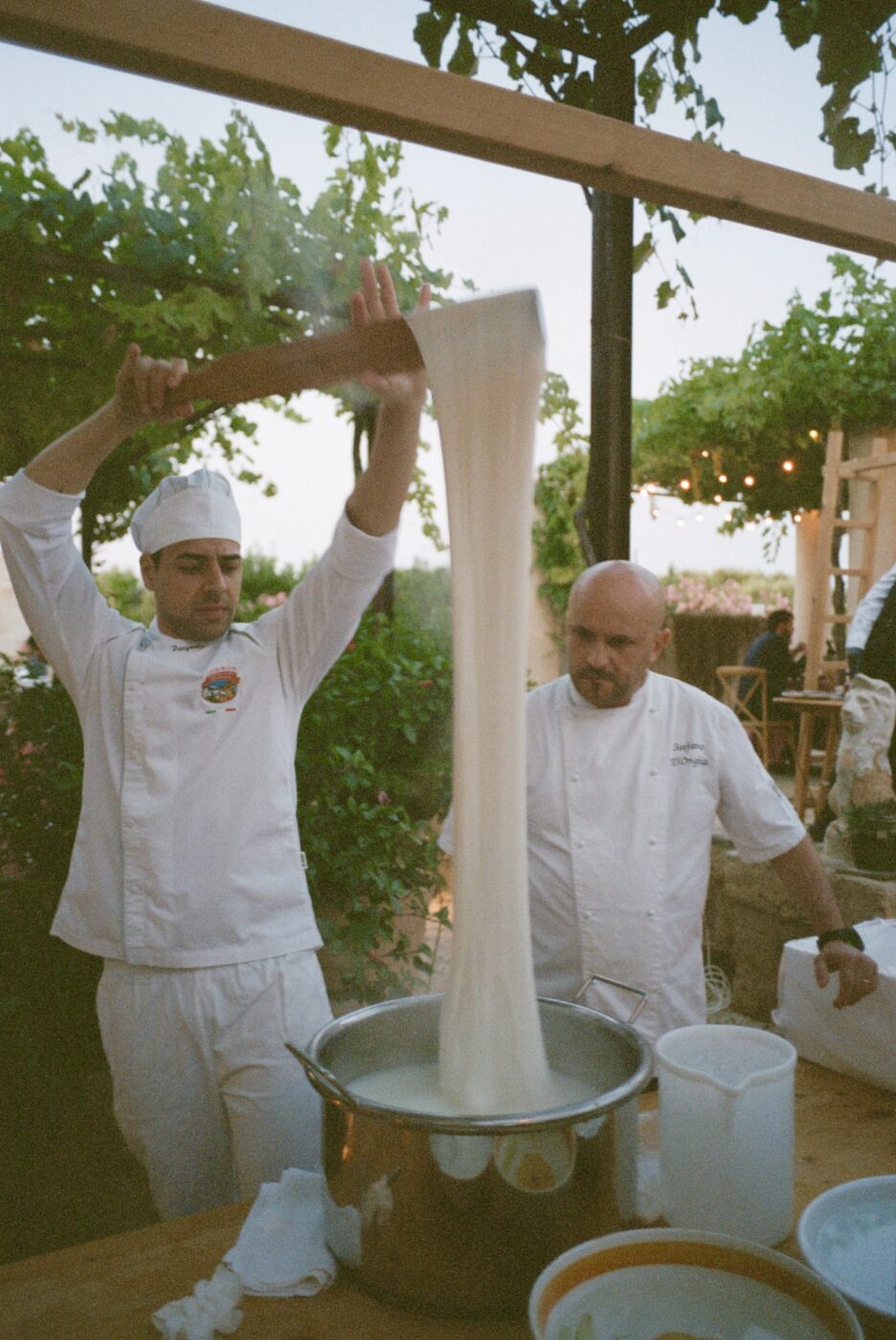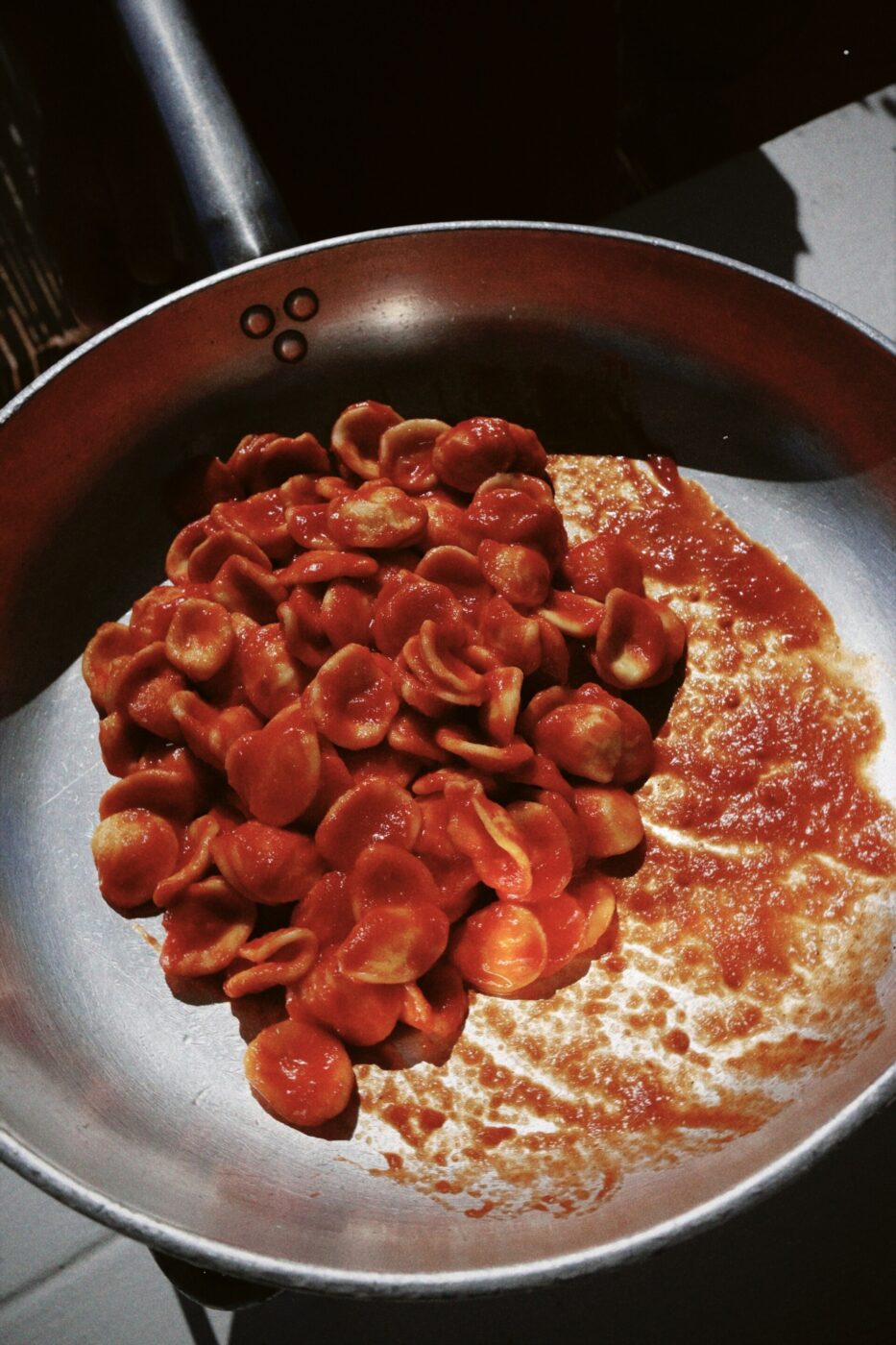The sun-kissed, coastally-endowed region of Puglia already has a lot going for it, without even mentioning the food. But we just have to mention the food… Puglia is the birthplace of some of Italy’s most famed products–burrata and taralli among them–and the rest of the culinary cannon here is guided by local produce, the abundance of available seafood, and the thrifty mindset of cucina povera. With both the country’s largest durum wheat and olive production, the region boasts frugal and simple recipes featuring incredible bread, dried pasta, and bright olive oil to finish each plate, along with rich wines like Primitivo and Negroamaro. Here, 20 foods (and one drink) you must try in Italy’s heel.
*Eating raw seafood–often right from the fishermen at the open air markets–is a staple of Pugliese cuisine. The most prized of these raw delicacies–what many are known to flock here for–is ricci di mare, or sea urchins. However, due to overfishing, it’s illegal to catch sea urchins in Puglia until May, 2026. So until then, you shouldn’t find, or eat, them here.
Orecchiette con Cime di Rape
Nonne line the streets of Bari’s Old Town, rolling out fresh orecchiette pasta, made with just local durum wheat flour and water. The tiny concave scoops, which translate to “little ears”, are perfect for capturing bits of sauce with each bite, and are most commonly paired here with cime di rapa, or broccoli rabe. The beauty of this combo is the balance: chewy orecchiette with the tender, nutty, and acrid broccoli rabe, lightly perfumed by garlic, anchovy, and peperoncino. It’s a dish commonly replicated in homes across the country, but it just doesn’t hit the same as eating it in Puglia.
Cozze alla Tarantina
Tucked on the inside of the heel, the city of Taranto is known as much for the tarantella dance as for its mussels. Praised in ancient times by Pliny the Elder, these bivalves are especially sweet and juicy since the salinity of the nearby sea is tempered by underwater freshwater springs. To prepare these little morsels alla Tarantina, steam the mussels in lightly sautéed garlic and white wine, then toss with a fresh passata and some of the brine released from the mussels during cooking. You might find the dish topped with chopped parsley or peperoncino, but always served with crusty bread to sop up the flavorful liquid.
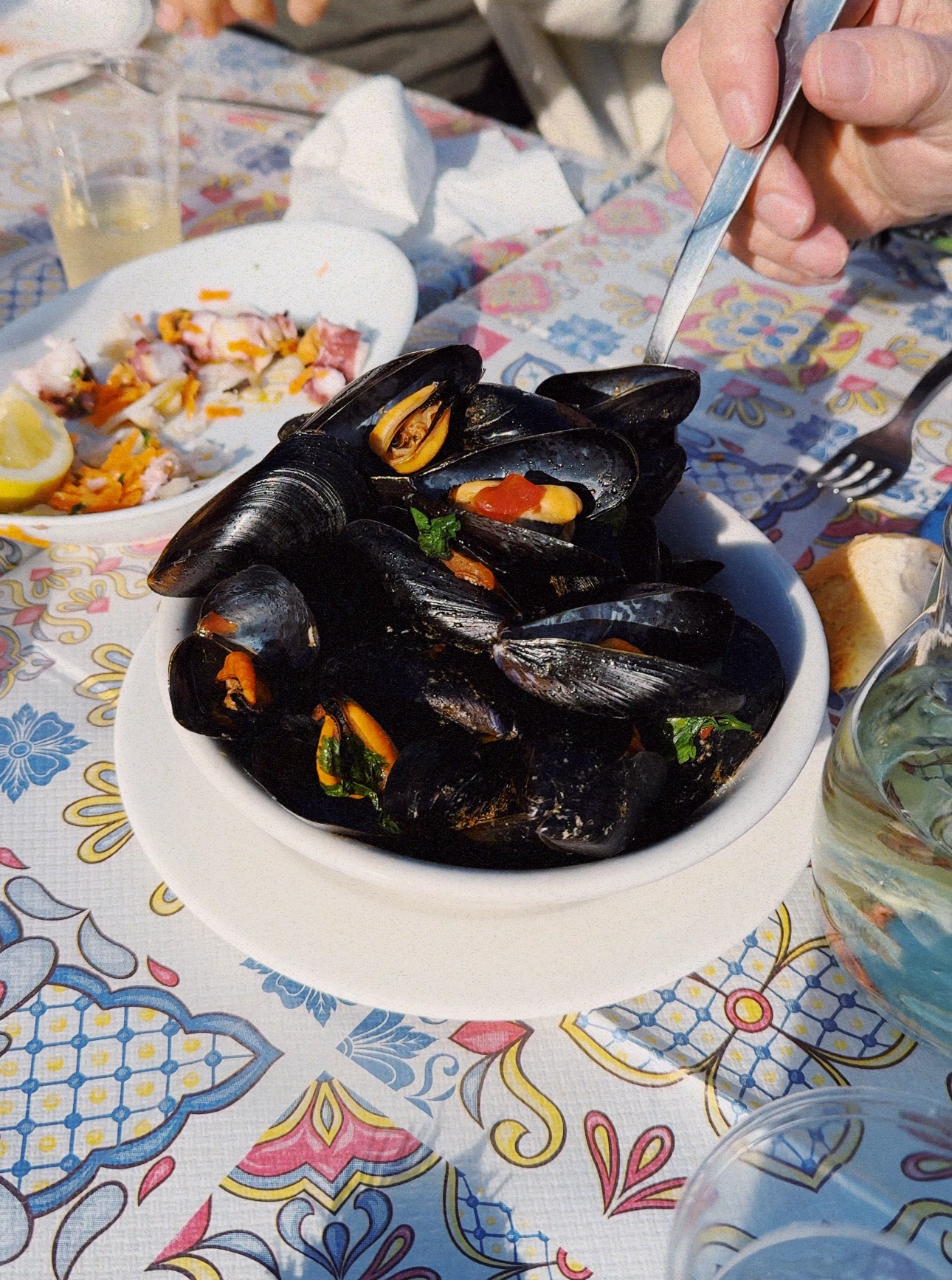
Fave e Cicoria
Simplicity at its finest. This two-ingredient dish pairs white fava beans, cooked down into a purée, with wild chicory, most commonly sautéed in garlic and peperoncino. The bitter greens complement the warm, earthy fava purée, which is somewhere between a hummus and a thick soup in consistency. Both fava and chicory are winter vegetables, and the hearty, comforting dish is a perfect antipasto, primo, or contorno during the colder months. If you can’t get to Puglia, find our recipe for the dish here.
Pasticciotto
Cream-filled breakfast goodies can be found from tip to toe in Italy, and Puglia’s contender is the pasticciotto, a petite, oval-shaped pastry made with two layers of shortcrust dough and filled with a thick crema pasticcera, or custard. Hailing from the seaside town of Lecce, the local version here contains a custard with a tinge of vanilla, while a Campanian tradition adds tart black cherry. The key to these gems is the crust: golden brown, crumbly, and dusted with powdered sugar, best enjoyed straight out of the oven with a bitter espresso.
Spaghetti all’Assassina
Bari’s “killer spaghetti” is burnt, crispy, and spicy. The namesake assassin doesn’t refer to the eater–though if you don’t like spice or the idea of crunchy pasta, be warned–but to the risottatura technique in which pasta is cooked like risotto. Just enough liquid is added to the pan for the pasta to absorb and cook, rather than boiling it separately. However, the pasta isn’t soft and even, but purposefully burnt along the bottom of a pan, making it crunchy and sizzly. Another “killer” is the peperoncino, of which there is plenty in the bright red, oily tomato sauce. History dates the recipe to the 60s, and the dish has gained such a cult-like following since then that actual regulations have been created by a dedicated Barese academy.
Bread
Thanks to flowing, never-ending wheatfields of ancient grains, Puglia’s nickname is the “breadbasket” of Italy, and while the baked goods from here rightfully deserve their own article, here’s a brief overview of some of the best. Pane di Altamura, the only PDO bread in Italy, is a crusty durum wheat semolina with a knob on top. Focaccia Barese is a circular, thick flatbread made with a generous amount of olive oil and topped with sweet cherry tomatoes, briny olives, and a dusting of oregano. Resembling mini calzones, panzerotti are crescent-shaped pockets of fried dough oozing with molten fillings like mozzarella and tomato or prosciutto and scamorza. Friselle are twice-baked, extra crunchy bread rounds with a characteristic hole in the center, which get soaked in water to soften and then topped with all sorts of bruschetta-like combos. Their counterpart, taralli, are oval crackers that are boiled, baked, and often flavored with herbs and spices, to be nibbled on at aperitivo. There’s no lack of fluffy–or crunchy–carbs here in Puglia.

Sagne ‘Ncannulate
This fresh pasta from Lecce translates to “twisted” in local dialect. A high ratio of soft flour to water gives these noodles quite a bite, especially because the thin strips are wrapped around a stick or rod and left to dry. Their curled shape is said to be a symbol of the city’s Baroque architecture. The chewy twirls often resemble Tuscany’s pici, and the “poor”, eggless dough is a great blank canvas for all types of accompaniments, most commonly tomato-based sauces like the simple scattarisciati with garlic, tomato, and olive oil.
Scapece di Gallipoli
Forced to endure siege after siege by nearby Mediterranean powers in Medieval times, the residents of the maritime town of Gallipoli, tucked safely behind the city’s walls, had to invent ways to preserve their food. One such way is scapece, or pickling fish. In this method, little fish are lightly floured and fried, then layered tightly with vinegar, oil, bread, and saffron and left to marinate. The dish may remind you of Venice’s sarde in saor, though the Pugliese version forgoes onions and supplements with spices. The key is to use incredibly fresh fish–most often young, small blue ope or cupiddhi from the local waters–so that the dish will last a long, long time.
Ciceri e Tria
The name of this dish, in local Salento dialect, translates to “tagliatelle with chickpeas”, and that’s exactly what it is–though the flavor and texture of this dish are not as simple as they may seem. The key is the fresh pasta, made with soft durum wheat and water and sliced thick and wide. But, in a technique rarely seen anywhere else across the boot, a few pieces of the pasta are deep fried and sprinkled atop the dish. The rest of the pasta is boiled like normal with the chickpeas, which are lightly flavored with a bit of onion or other aromatic veggies. Some serve it soupy and some serve it drier, but the trifecta of textures always stays the same.
Bombette
These little pork “bombs” are the Valle d’Itria’s, and Puglia’s, most famous street food, and for good reason. They stem from a Pugliese tradition of the “fornello pronto”, or fornelli, which are special macellerie (butcher shops) where the meat is selected, grilled, and eaten on the spot. While you can get various cuts at these fornelli, the bombette are really the best: thin pieces of pork braciole, wrapped, often with a thin piece of cappocolo or salami, around a meltable cheese, typically caciocavallo. It’s important that the meat is tucked inside itself to make a little ball, protecting the inevitably gooey cheese, before they are skewered and cooked over a charcoal fire. Usually served in a paper cone or on a slice of plain bread, the little bite-sized nuggets are never more than 3-5 cm long, which is great since we want to eat 100 of them.
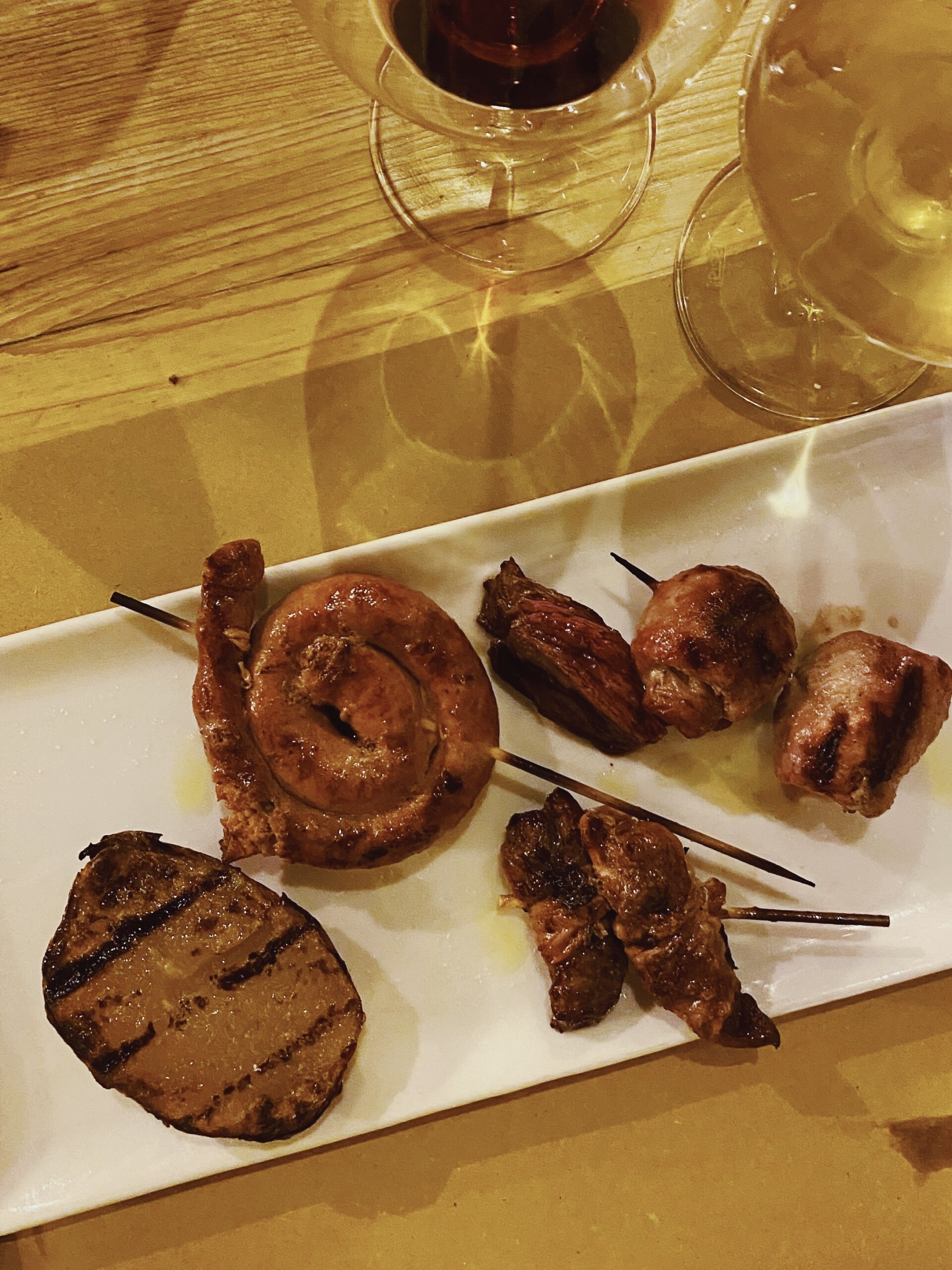
Pettole
Pettole are Puglia’s contribution to the country-wide fried dough repertoire. These crisp, light, yeasty balls are most often associated with Christmas, and, unlike their gnocco fritto and coccoli counterparts, are served alone. Sweet versions are topped with powdered sugar, icing, honey, or vincotto (a thick grape reduction), and savory versions come with salted cod, cauliflower, olives, sun dried tomatoes, or anchovies. They are best eaten straight out of the hot oil, wrapped in an absorbent paper towel.
Cartellate
Another fried dough dessert, cartellate are made from a dough of flour, extra virgin olive oil, white wine, and orange zest or liquor that gets rolled out thin, sliced, and then formed into rose-like rounds. The beautiful shapes are deep fried and then covered with a sweet syrup like vincotto of figs or grapes or honey, and then sprinkled with colorful nonpareils. The shape is meant to represent both the baby Jesus’s halo and the crown of thorns worn during crucifixion. Most often eaten around Christmas time, the sweet treats are perfectly crunchy and sticky.
Tarantello di Tonno
A rare and valuable cut of red tuna, the Tarantello di Tonno is a little strip that reaches down from the tuna’s navel between the ventresca (belly) and the filet. Softer than the latter but not quite as fatty as the former, the cut is tender, flavorful, and highly sought after. This elusive piece can only be obtained following specific, artisanal processing techniques developed in the 19th century in Taranto, and history dates this cut of tuna to the 16th century in Taranto, when Cardinal Campeggi served it at a lunch to Emperor Charles V of Spain. Back then, the fishermen of Taranto often salt-cured or cured it as a sausage, but now olive oil is used to preserve the piece’s delicacy. Across Puglia, find it in antipasti, salads, or even mixed in with pasta for primi.
Barattieri
Grown near Bari, Fasano, Brindisi, and Ostuni, this typical Pugliese fruit is the lovechild of a melon and cucumber. Light green and with tiny seeds, the tender flesh is incredibly refreshing and most often eaten sliced with a small sprinkling of salt to cleanse your palate from heavier dishes. You’ll also find the fruit in the traditional Altamurese dish called cialledda, which is like a panzanella made with stale Pane di Altamura bread, barattieri, tomatoes, olive oil, and oregano.

Calzone di Cipolle
You’ll smell this famed Pugliese dish long before you taste it. Basically a caramelized onion pie, a yeasty, crumbly dough is baked around a combination of onions, olives, raisins, and anchovies (some variations also call for tomato). The filling has it all: salt, sweet, and creaminess from the onions. The dough itself is highly contested, with some who claim to omit yeast entirely, use white wine, or even add eggs. The constant, and the key, is the onions: the Pugliese long white onions are best, but you can play with different varieties for subtle changes in flavor. Whichever onions you try, calzone di cipolle is a guaranteed, cozy crowd pleaser.
Tiella Barese
A flagship recipe of Bari, this creamy rice with mussels and potatoes is known as a tiella for the large pan the dish is cooked in. Historically, a family’s wealth could be judged from serving this: the more mussels layered atop the rice and potatoes, the richer they were. Resembling a paella, the dish likely stems from the 17th century’s Spanish occupation of Puglia. It’s prepared pretty similarly everywhere, with rice, mussels, potatoes, garlic, onions, parsley, cherry tomatoes, and pecorino–yes, pecorino! It’s one of the only instances where cheese and seafood are allowed to go together. For all intents and purposes, everything is made together in one pan, although some people might choose to quickly steam and open the mussels beforehand (being sure to preserve the liquid). Layering each of the ingredients gives the dish a uniform, briny flavor, tinged with a dust of salt from pecorino and sweetness from the addition of cherry tomatoes or other seasonal produce.
Cardi Fritti
Cardoons, a thistle-like vegetable resembling an overgrown celery stalk but flavored like an artichoke, grow wild across Puglia and Southern Italy. The tender vegetable is most often served as an appetizer, where it gets dredged in a thick, yeasty batter and deep fried. Cardoons can be a bit tough and stringy, especially when not in season, so the pieces are most often parboiled before frying. You’ll also find them in soups or side dishes across the region, but, when fried, a simple sprinkle of salt and a touch of lemon juice are all they need.
Salamura Cotta or Peperoni alla Ficandò
Similar to forms of peperonata found across the country, salamura cotta is a stewed dish of fresh bell peppers, tomatoes, and onion. With a little basil, olive oil, and a touch of vinegar, the ingredients melt down into an incredibly sweet, soft, and juicy combo that just gets better with time. Eat it alone, on top of grilled meat or fish, mixed in with pasta, or with a big ball of burrata–with plenty of bread to mop up all the flavors.
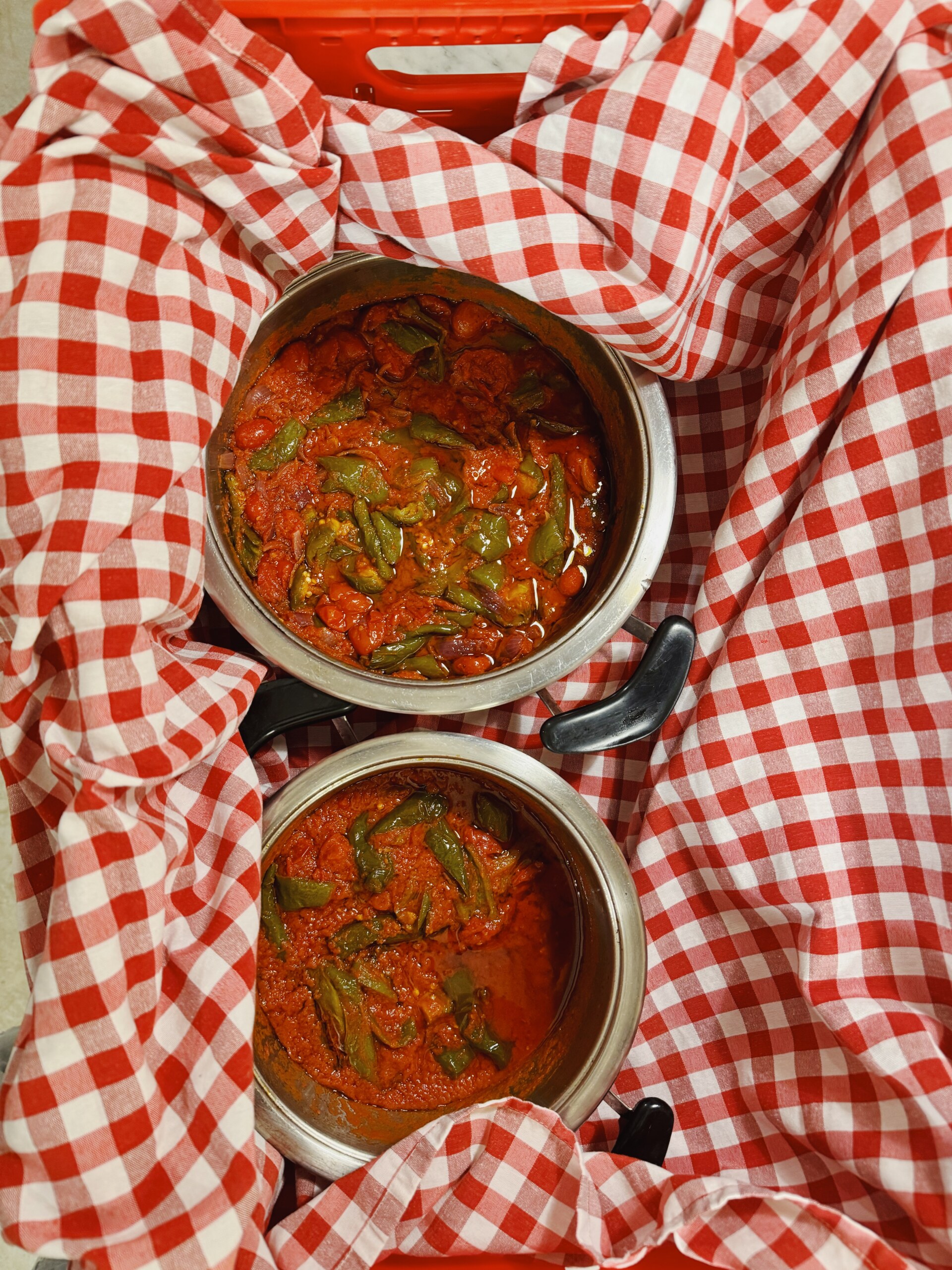
Frittata di Lampascioni
A common secondi in Puglia, this eggy frittata is made with lampascioni: the bulbs of a common wildflower that resemble an onion, but are slightly more bitter. To remove a bit of the bitterness, the delicate bulbs are cleaned, soaked in cold water, and then boiled, before being browned and topped with the whisked egg mixture. Known for being diuretic, emollient, and anti-inflammatory, lampascioni really only grown wild in Puglia and Basilicata, often among the olive groves. Their flavor shines best when highlighted in a simple frittata, though you’ll also find them cooked into fave e cicoria, sautéed with potatoes, or roasted with lamb or pork.
Sporcamuss
These small finger sandwiches are not something you’d find on a high-tea tray: instead of cucumber and cream cheese, a square of fried puff pastry dough is sliced in half, filled with crema diplomatica, and dusted with powdered sugar. Crema diplomatica, literally “diplomat’s cream”, is an extra thick custard mixed with whipped cream, piped into hot puff pastry and served immediately. The dessert is notoriously messy, and sporcamuss actually means “dirty the mouth”, which refers to the way the creamy filling oozes out to cover your lips and the sugar powders your nose with each bite. The mess is well worth it.
BONUS: Caffè Leccese
While the rest of the boot seems to shudder at the idea of ice in their coffee, Puglia celebrates it with the Caffè Leccese, or Caffè alla Salentina. In this tiny, sweet, chilled drink, hot espresso is mixed with either fresh almond milk or almond syrup over ice, often served on one large “whiskey” rock. It’s best with homemade almond milk or almond syrup. Though almond milk has caught on in coffee culture abroad, it has deep-seeded roots in Italy’s southern regions, and this combo is nothing like a grande iced latte with almond milk.


